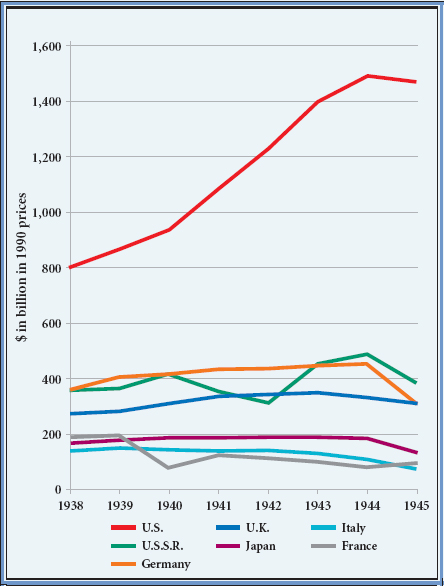AMERICA COMPARED |  |
The Scales of War: Losses and Gains During World War II
World War II saw an extraordinary loss of life. Worldwide, at least 50 million people perished between 1939 and 1945 from war-related causes. The majority of those who died were civilians, though many millions of soldiers perished in battle as well. For most countries, we have reasonable estimates rather than precise figures. The chart below compares the United States with other major combatants and nations caught in this global struggle.
On the other side of the scale, the war fueled tremendous economic growth, at least in the United States, which was spared the physical devastation of Europe and East Asia. Military production for World War II lifted the United States out of the Great Depression. Gross domestic product (GDP) nearly doubled between 1938 and 1945. Economic production in other combatant nations, as shown in the second figure, grew little if at all.


Source: GDP data adapted From Mark Harrison, “The Economics of World War II: Six Great Powers” in International Comparison (1998), 11. Copyright © 1998 Cambridge University Press. Reprinted by permission of Cambridge University Press.
QUESTIONS FOR ANALYSIS
Question
Why did the United States experience so many fewer deaths than other nations? Why were there so many deaths in Eastern Europe and the Soviet Union?
Question
Note the relative position of U.S. GDP to other industrial nations in 1938 and in 1945. How were some of the key domestic changes discussed in the chapter, such as rural-urban migration, racial conflict, and women’s employment, linked to this economic growth?
Question
How might you use these comparisons to add to your understanding of key wartime developments, such as the Holocaust, Stalin’s demand for a second front, or the entry of the United States into the war?